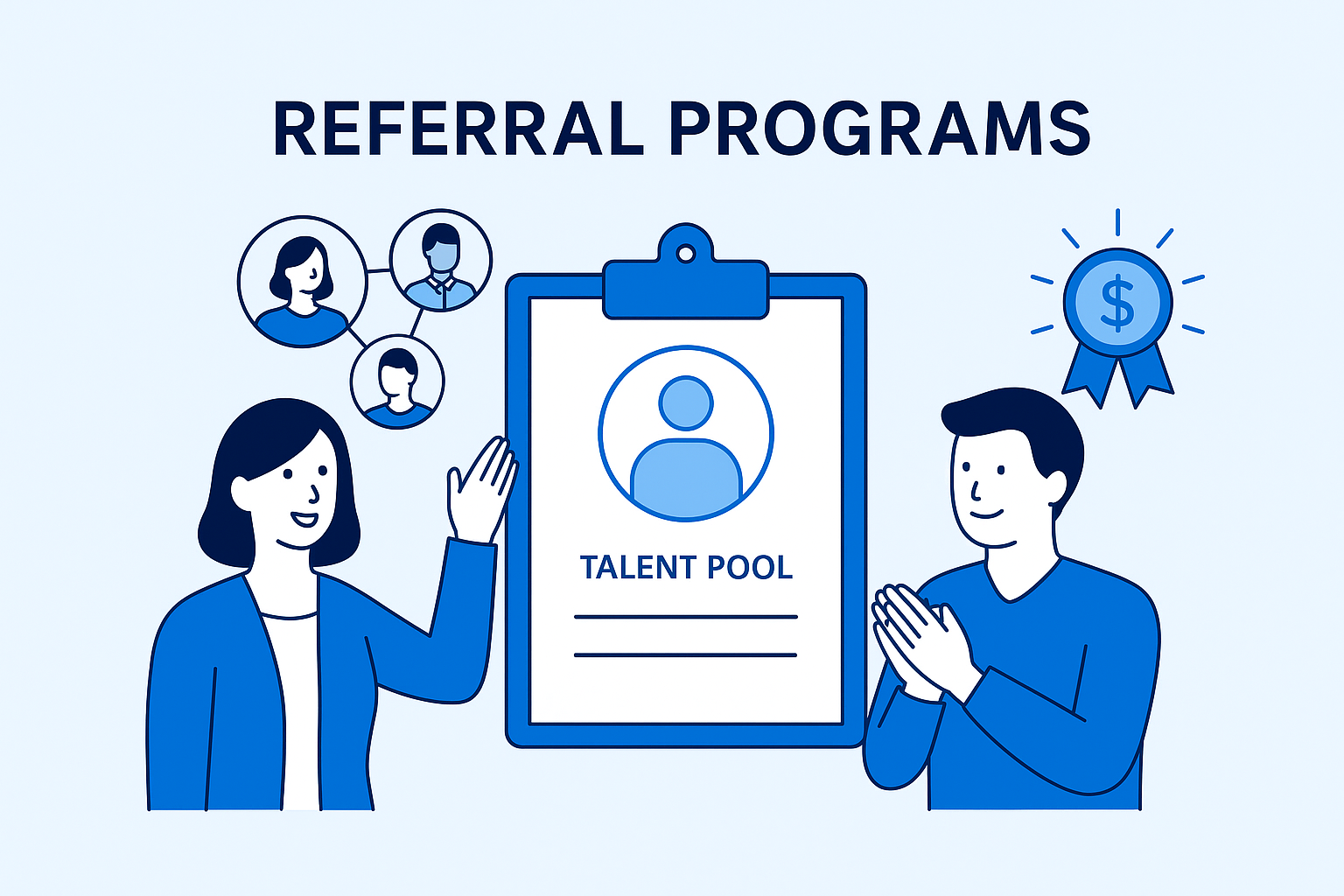Referral Programs in Recruitment: Turning Employees into Talent Scouts
What Are Referral Programs?
Referral programs are structured systems that encourage current employees to recommend candidates from their networks for open positions. Typically, these programs offer incentives—such as cash bonuses, extra PTO, or recognition—for successful hires, making employees active participants in talent acquisition.
In a tight labor market, employee referrals are one of the most cost-effective, high-quality sources of hire. They tend to result in faster hires, better cultural alignment, and higher retention rates compared to traditional sourcing methods.
Related: A strong Applicant Tracking System (ATS) makes managing referral pipelines smoother and more data-driven.
Why Referral Programs Matter More Than Ever
Modern organizations face increasing challenges: competitive talent markets, rising hiring costs, and disengaged employees. A referral program solves multiple problems at once:
🔄 Faster time-to-hire: Referred candidates typically move through hiring stages 25–40% faster.
📈 Higher quality hires: Employees tend to recommend people they trust and believe in.
💬 Stronger employee engagement: Referral bonuses give employees a stake in the company's growth.
💸 Lower hiring costs: No agency fees, better retention = long-term savings.
Learn how effective referrals align with broader Employee Experience strategies and foster a culture of shared ownership.

How a Good Referral Program Works
A high-performing referral program usually includes:
Clear Communication: Explain who can be referred and how.
Easy Submission Process: Use your ATS or an internal portal to collect referrals (e.g., Moka supports internal referrals directly via employee login).
Transparent Tracking: Let employees track their referral status in real-time.
Tiered Rewards: Offer meaningful, time-bound incentives, e.g., bonus on day 1 + bonus after 3-month retention.
Internal Marketing: Run campaigns, recognize top referrers, and make it fun.
Challenges to Watch For
Even the best programs need active management. Key pitfalls include:
🎯 Too broad targeting: Get clear on which roles are referral-priority.
❌ Lack of follow-up: Employees lose trust if referrals go into a black hole.
🧩 No system integration: Manual tracking leads to missed rewards and poor data visibility.
Related: Avoid breakdowns by integrating your referral program with a Recruitment Management System for streamlined tracking and reporting.
How MokaHR Helps You Manage Referral Programs
MokaHR’s ATS and HR platform enables seamless referral workflows:
Employees submit referrals via their own portal or mobile
HR sees real-time referral data in candidate pipelines
Automatic status notifications and reward trigger points
Analytics show top referral sources, conversion rates, and payout tracking
Whether you're scaling up quickly or improving quality-of-hire, MokaHR ensures your referral strategy is as data-smart as your sourcing.
❓ FAQ
Q: Are referral programs only suitable for tech companies?
A: No. While common in tech, referral programs work well in retail, finance, healthcare, and logistics—anywhere employee networks are strong.
Q: What if employees refer unqualified candidates?
A: Set clear eligibility criteria and train employees on what makes a good fit. Use referral quality analytics over time to improve performance.
Q: Should referral bonuses be public?
A: Transparency helps drive participation, but flexibility is key. Some firms use internal points, others provide tiered cash rewards.
Ready to tap into your strongest recruiting channel—your team?
Use MokaHR’s referral-enabled ATS to launch, track, and scale high-impact employee referral programs with zero friction.
👉 Request a Demo
HR Glossary: Master the Language of Modern HR
From recruiting candidates to onboarding new team members, MokaHR gives your company everything you need to be great at hiring.
Subscribe for more information

